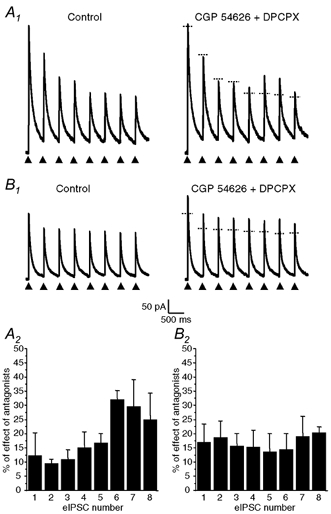Figure 5. Presynaptic A1 and GABAB autoreceptors were activated in a phasic (activity-dependent) manner in neurones coreleasing GABA and ATP but not in neurones releasing only GABA.

Trains of eight identical electrical pulses (0.1 ms duration) separated by 400 ms (2.5 Hz, arrow heads) were applied at a frequency of 0.05 Hz (i.e. every 20 s) to the cell body of presynaptic neurones coreleasing GABA and ATP (A) or of neurones releasing only GABA (B) as determined by the presence or absence of P2X receptor-mediated eEPSCs at a HP of −90 mV. A1 and B1, effects of coapplication of DPCPX (1 μm) and CGP 54626 (1 μm) on the amplitude of eIPSCs evoked by the train of eight pulses. Traces on the left were obtained under control conditions and traces recorded in the presence of CGP 54626 + DPCPX are represented on the right. The horizontal dotted line segments on the traces recorded in the presence of the antagonists indicate the peak amplitude of each corresponding control eIPSC (recorded in the absence of the antagonists). A2 and B2, histograms representing the mean ± s.e.m. of the increase in amplitude of each eIPSC within the train in the presence of CGP 54626 + DPCPX for four different neurones coreleasing ATP and GABA (A2) and three distinct neurones which released only GABA (B2). The amplitudes of the effect on the sixth and seventh eIPSCs in A2 were found to be significantly different from that on the other eIPSCs (one-way ANOVA with repeated measures, P < 0.05 and post hoc comparison with Duncan test, P < 0.05). There was no statistically significant difference in the case of neurones releasing only GABA (B2). The HP was 0 mV.
